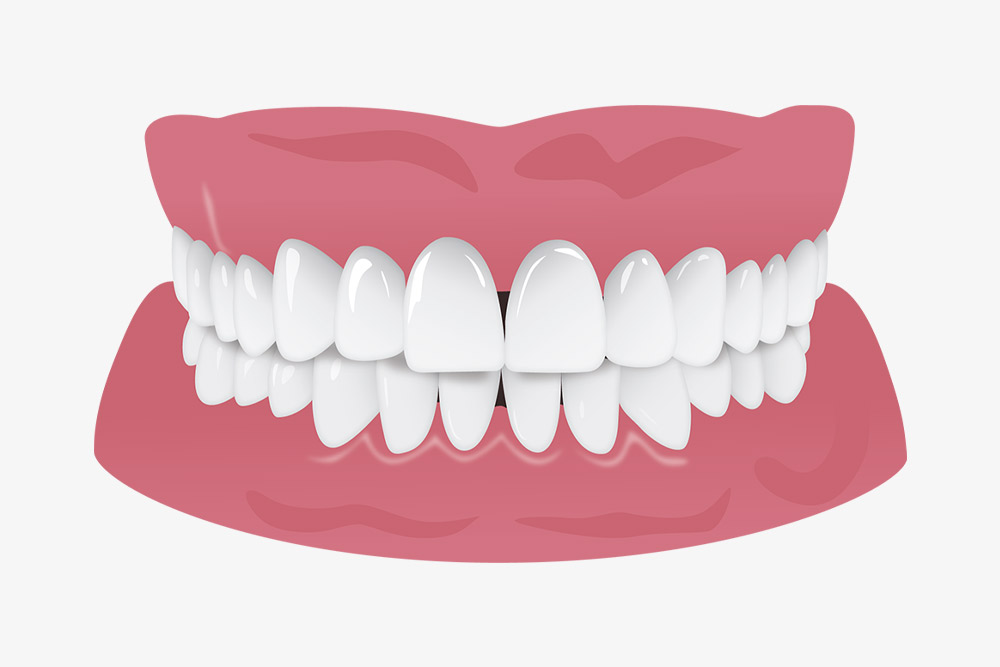Do you want to fix the black triangles between your teeth? It’s possible. This article highlights vital details such as the causes and treatment options of black triangle teeth, how can you prevent them and their link with your dental health. This condition is also known as gingival embrasures
What Are Black Triangle Teeth?
Black triangle teeth, also known as black triangles between teeth, are spaces or gaps that appear between adjacent teeth at the gumline. These triangular-shaped gaps can be visible when smiling or talking and can have both aesthetic and oral health implications.
What Are The Causes of Black Triangles Teeth?
Following are the leading causes of black triangles between teeth:-
-
Gum Recession
Gum recession is caused due to smoking, aging, or periodontal diseases. These degenerated gums pull away from your teeth and leave their roots vulnerable to bacteria and cavities.
-
Wrong Brushing Techniques
According to a study, brushing your teeth aggressively and brushing them with a bigger-sized brush can also lead to black triangles.
-
Shape of Tooth
Everyone’s teeth are not perfectly shaped. If your front teeth, also known as incisors, are narrow at the gum line and broad at the biting surface, you may develop gingival embrasures.
-
Orthodontic Treatments Gone Wrong
You may develop black triangles after braces or other orthodontic treatments due to the shift in your teeth. In that case, you might need to repeat your treatment.
-
Bone Loss
Losing bone near your tooth’s base leads to black triangles. It can also cause gum disease, osteoporosis, and other oral health issues.
Tooth Shape Responsible for Black Triangle Teeth
Let’s look at how the shape of your teeth plays a role in causing the black triangle teeth:-
- Rectangular Teeth
As rectangular teeth have straight, symmetrical edges, they fit next to each other without any gap. So there is no chance of gingival embrasures.
- Oval Teeth
Although there is space in the bottom due to the round edges of oval teeth, there is less possibility of black triangles as the top of the teeth fit perfectly next to each other.
- Triangular Teeth
Here is your plausible culprit! The wider edge of triangular teeth at the bottom creates the space for black triangles between teeth.
Link Between Black Triangles Teeth & Your Dental Health
Black triangles are the result or symptoms of an underlying oral health issue. Thus if you notice any gaps developing in your teeth, go through the causes mentioned above. Do you think you or going through bone loss or gum disease, or any other health issue? The best thing would be to contact your dentist immediately. They can treat black triangles along with the dental issue causing them.
How To Fix Black Triangles In Teeth?
Depending on the cause and condition of the gingival embrasures, dentists can suggest you any of the following treatment:-
-
Braces
If you got black triangles after braces treatment as a side effect, another braces treatment can fix the issue. Your orthodontist can also recommend other advanced orthodontic treatments according to your case.
-
Gentle Dental Hygiene
Aggressive dental hygiene can lead to black triangles in teeth. So if the damage has just started, the gaps are minimal, and your gums are healthy, you can turn it back with gentle dental hygiene.
-
Brushing and Flossing Correctly
Apart from being gentle, you need to brush and floss with the correct technique. Follow the guidelines of the American Dental Association for brushing and flossing correctly without damaging your gums.
-
Veneers
Veneers are another popular option for fixing black triangles. These custom-made, thin shells of porcelain are bonded to the front surface of the teeth, providing a durable and aesthetic solution.
-
Hyaluronic Acid Treatment
In hyaluronic acid treatment, hyaluronic acid is injected into your gums to regenerate them. This is an ideal treatment if the cause of your gingival embrasures is gum rescission.
-
Gum contouring
Gum contouring is a surgical procedure that can be used to reshape the gums and reduce the size of black triangles. Gum contouring is a more invasive procedure than dental bonding or veneers, but it can provide a more permanent solution.
-
Dental bonding
Dental bonding is a relatively inexpensive and quick procedure that can be used to fill in small black triangles. The dentist will use a tooth-colored resin to build up the teeth and fill in the gaps.
How To Prevent Black Triangles Between Teeth?
Preventing black triangles between your teeth is achievable through simple adjustments to your dental routine. By following these expert tips, you can maintain healthy gums, avoid gum recession, and keep those unsightly gaps at bay. Discover the best practices for flossing techniques, toothbrush selection, and minimizing the risk factors associated with gum disease.
Section 1: Gentle Flossing for Healthy Gums
To prevent black triangles between your teeth, it’s essential to floss gently and avoid causing harm to your gums. By following these steps, you can ensure effective flossing without irritation or gum recession:
- Use a gentle touch: Apply light pressure while flossing to protect your gums from unnecessary strain.
- Be thorough but gentle: Clean between each tooth using a back-and-forth motion, being careful not to push the floss forcefully against your gums.
- Regular flossing routine: Make flossing a daily habit to maintain optimal gum health and minimize the risk of black triangles.
Section 2: Opt for a Soft-Bristle Toothbrush
Choosing the right toothbrush is crucial to prevent black triangles and promote gum health. Follow these recommendations for a toothbrush that will be gentle on your gums:
- Select a soft-bristle toothbrush: Soft bristles are more forgiving on your gums, minimizing the chances of gum recession and the formation of black triangles.
- Use proper brushing technique: Hold your toothbrush at a 45-degree angle and use gentle circular motions to clean your teeth and gums effectively.
- Replace your toothbrush regularly: Replace your toothbrush every three to four months or sooner if the bristles become frayed to maintain optimal oral hygiene.
Section 3: Avoiding Risk Factors for Gum Disease
Gum disease is a significant contributor to the formation of black triangles. By minimizing risk factors associated with gum disease, you can protect your gums and prevent the appearance of unsightly gaps between your teeth:
- Quit smoking: Smoking increases the risk of gum disease and hampers the body’s ability to heal damaged gums. Quitting smoking promotes healthy gums and reduces the chances of black triangles.
- Maintain good oral hygiene: Brush your teeth twice a day, floss daily, and visit your dentist regularly for professional cleanings to prevent gum disease.
- Healthy lifestyle choices: A balanced diet, regular exercise, and stress management contribute to overall gum health and decrease the likelihood of black triangles.
By incorporating these simple changes into your dental routine, you can proactively prevent black triangles between your teeth. Gentle flossing, using a soft-bristle toothbrush, and avoiding risk factors for gum disease are key to maintaining healthy
Conclusion
Various factors contribute to the formation of black triangles, such as gum damage, age, wrong dental hygiene techniques, bone loss, etc. However, it is essential to fix these black triangles for cosmetic reasons and dental well-being. They not only ruin your smile, but they also provide space for bacteria to grow in your teeth. The good news is there are many treatment options available to treat gingival embrasures. Your dentist is the right person to suggest the appropriate treatment in your case.

Dr. Brian Thurman has spent his entire life enjoying all the beauty that California has to offer. A Fresno native, he still escapes to the ocean or the mountains whenever his busy schedule allows. Driven by his love for natural beauty, Dr. Thurman enjoys creating beautiful smiles and healthy bites that last a lifetime. He is proud to be the only Ivy League trained Orthodontist in the Fresno/Clovis area.

